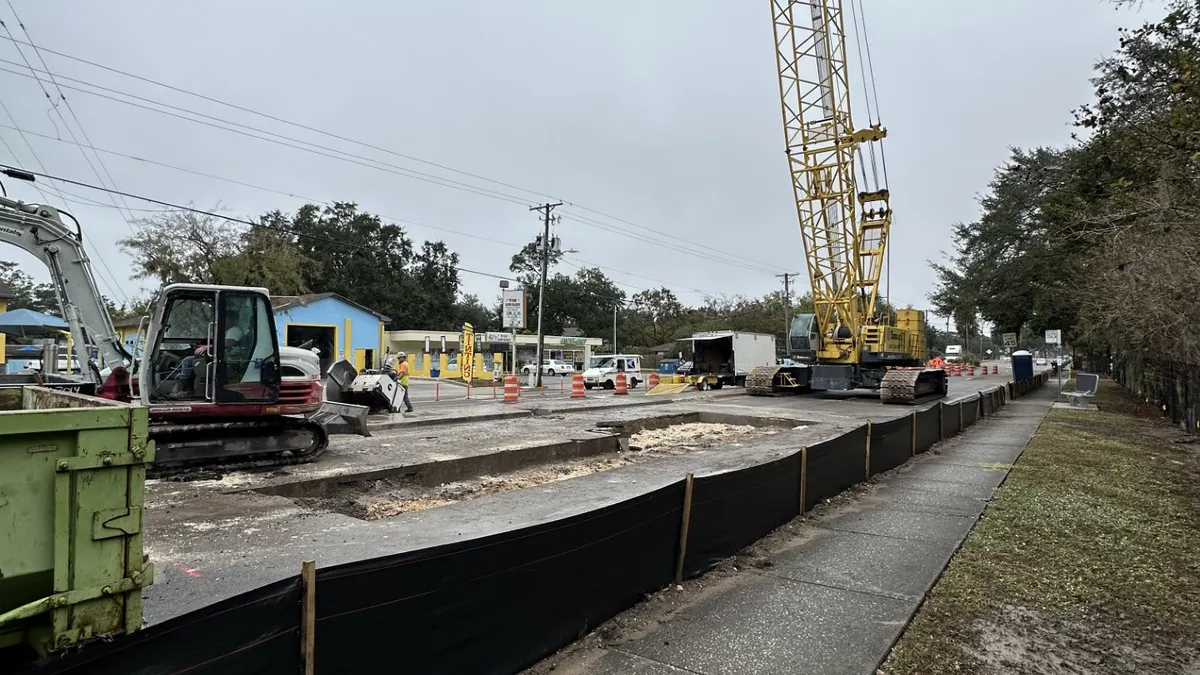When Denver International Airport (DIA) officials terminated the $1.8 billion public-private partnership (P3) terminal expansion deal with Great Hall Partners last year, industry watchers wondered if they would be able to get the project back on track and finish it close to its projected completion date. At the very least, the turn certainly knocked some of the polish off the notion that P3s were the answer for every public project.
Since then, DIA has revamped its delivery strategy and decided a P3 was not the right approach. Now an even higher-profile, costlier partnership could be on its way to taking a similar hit — the $2 billion, 16-mile Purple Line light-rail project in Washington D.C.'s Maryland suburbs. The Purple Line has attracted national attention because it is being financed and built via a $5.6 billion public-private partnership, one of the most far-reaching of any U.S. transit project, according to The Washington Post.
But in this new scenario, the public agency — in this case, the Maryland DOT and the Maryland Transit Administration — is not scuttling the P3. In an announcement earlier this month, the design-build arm of the P3, Purple Line Transit Constructors (PLTC) said it would exit the project.
PLTC is a design-build joint venture between Fluor, The Lane Construction Corp. and Traylor Bros. Inc. Fluor is also a member of the development and equity investment team called Purple Line Transit Partners (PLTP), which includes Meridiam and Star America.
In a May 1 press release announcing the decision, PLTC said that it has not been able to successfully negotiate time extensions for schedule delays and for the extra costs it has incurred during the last three years on the project.
“PLTC still firmly believes in the goals and mission of the Purple Line Project and the important benefits it will deliver to Maryland,” said Scott Risley, PLTC’s project director. “Unfortunately, due to circumstances outside of PLTC’s control, there were multiple delays on the project and PLTC was unable to obtain the time and cost relief to which it is entitled from MDOT/MTA. Regretfully, PLTC simply cannot complete the project under these circumstances.”
PLTC said it would work with the transit partners and the state to ensure a smooth transition.
Delays and lawsuits
A significant problem that the Purple Line faced early on is activist pushback against the decision to build the light-rail line in a corridor that had become a popular recreation area and that was close to homes. In fact, right about the same time that the project was scheduled to receive almost $1 billion in Federal Transit Administration funds, opponents were successful in persuading a federal judge to vacate both state and federal approvals for the project based on what they argued were incorrect ridership numbers in the project’s environmental study.
It was almost a year before an appeals court decision allowed construction to move forward.
In addition to that initial legal battle, the Friends of the Capital Crescent Trail have brought additional court actions, the last of which was dismissed only last month. The project team announced last year that it had accumulated $300 million in cost overruns, pushing the budget of the P3 closer to $6 billion.
P3 arrangements had been growing in use for large-scale governments. P3s pair public entities with private investors to create projects that range from toll roads and highways to airports, government buildings, schools and universities. They are seen as an innovative way for municipalities to get much-needed infrastructure upgrades without cutting corners or breaking public taxpayer-funded budgets. Most P3 contracts are for design-build, fixed budgets and fixed schedule work, according to a recent position paper from the Design-Build Institute of America.
However, some construction firms are beginning to turn away from such arrangements. Last year, several large contractors including Granite Construction and Skanska announced they are moving away from some P3s, saying that the benefits are outweighed by problems.
A cautionary tale?
So, are P3 challenges enough to change the way contractors look at the delivery method and perhaps lead some to change their minds about becoming involved in one?
PLTC said that the contract it has with the P3 allowed for a termination and to recoup related expenses, so those considering steering clear of P3s should know there is a way out as long as the contract is written in its favor.
However, if instead a P3’s equity and development consortium is the unhappy partner, that might be a different story, said attorney Keith Poliakoff, a partner in the Fort Lauderdale, Florida, office of Saul Ewing Arnstein & Lehr and co-chair of the firm’s government relations practice group.
It would be difficult for a development consortium to walk away from a project, he said. In addition to the hundreds of employees and subcontractors who are hired to perform a job, the developers also must consider their own financial liability and the impact of trying to obtain future government contracts.
As for the design-build group that has said it will exit the project in the next few months, Poliakoff suspects it could be a negotiating tactic that will force the state of Maryland to the bargaining table, meaning that “cooler heads [could] prevail” and perhaps PLTC will stay on the job. A statement emailed to Construction Dive from the MTA said that the state agencies have been actively engaged in discussions with PLTC to mitigate the impacts of litigation and change order requests on the project schedule and cost.
"While MDOT MTA cannot comment further until a settlement agreement is reached, we remain committed to continuing negotiations and focused on getting this key transit project completed and operational for the taxpayers of Maryland," the statement reads.
Last week, state transportation leaders said they are negotiating with the consortium in hopes of preventing them from leaving the project.
“There are conversations daily. There are multiple conversations on some days, and they’re very productive,” Maryland Transportation Secretary Greg Slater told the Montgomery County Council. PLTC declined to comment on the matter.
Following Slater's comments, PLTP spokesman John Undeland added, “We appreciate Secretary Slater’s positive comments about our discussions and his commitment to reaching a fair and equitable outcome. We are in daily conversation with the state to reach an agreement that enables us to continue advancing the project without further delay.”
Costs and benefits
There will be lessons learned, though, from this and other P3 disappointments like DIA, said attorney Justine Kastan with the law firm Rutan & Tucker. Some teams, she said, may choose not to work with a certain party again after they have a bad experience, or they may decide that certain elements of a deal don’t work for them.
Government agencies, Kastan said, can also be plagued by the same issues that private-sector deals must endure like lack of the necessary resources or disorganization.
“But,” Kastan said, “teams may also be ‘older and wiser’ and willing to engage in other similar projects but with particular demands as to deal terms that they have learned the hard way.”
So, will the P3 be made so unattractive by potential problems that contractors and designers will swear off involvement in these deals? No, according to Kastan and Poliakoff.
All in all, Poliakoff said, a P3 is only as good as the contract and who is made to bear the risk for performance.
“Every government agency is different,” Kastan said. “When government agencies are sufficiently resourced with project champions — backed up by devoted teams — they can be fantastic partners, and this is how we have seen many successful P3s come to fruition.”
P3s that have favorable outcomes thus far, she said, include the $513 million Long Beach Civic Center in Long Beach, California, and the $1.3 billion University of California, Merced 2020 campus expansion.
“I actually believe that government agencies are the ideal contractual partners,” Poliakoff said. “The government has prompt payment requirements, so a vendor has the assurance that if they perform they will be paid. This is just one of those odd occasions where the culmination of delays may make the risk to the contractor not worth the reward.”



















